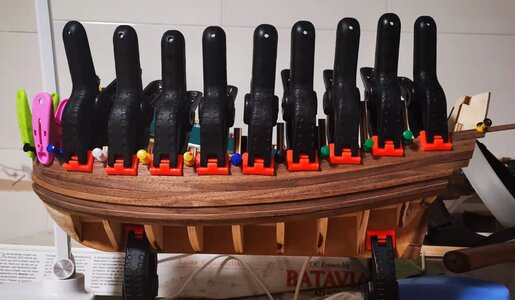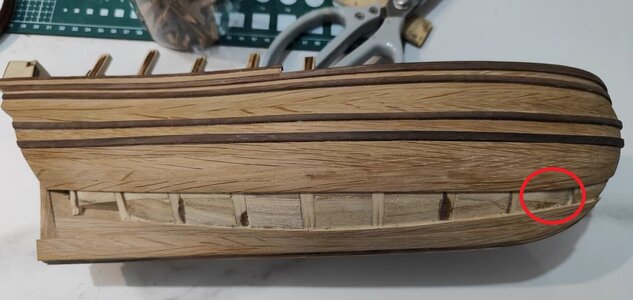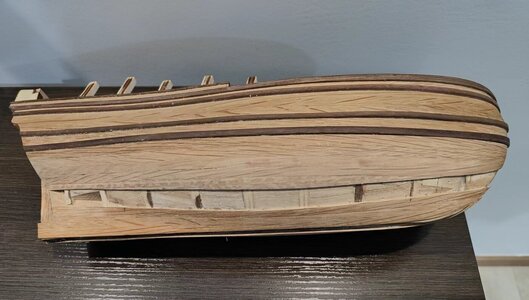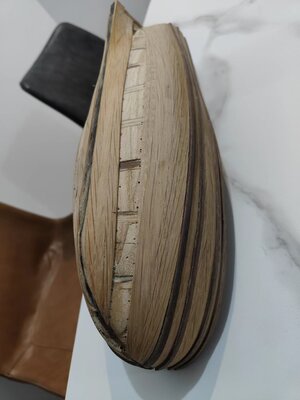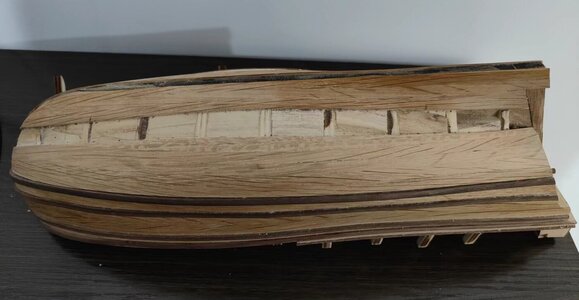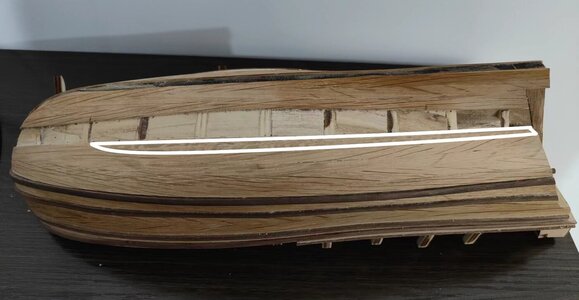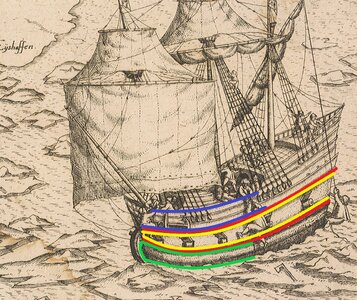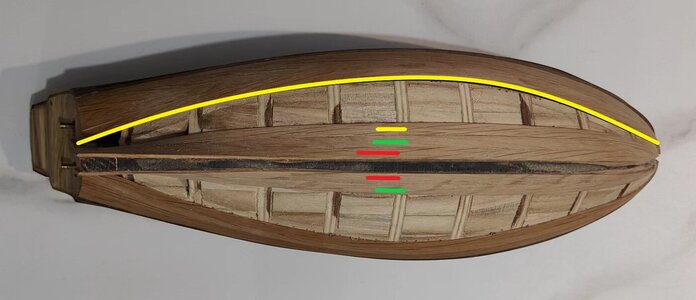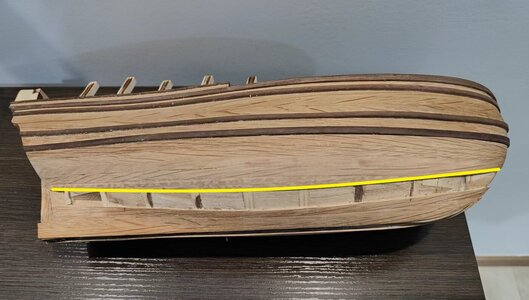- Joined
- Jan 9, 2020
- Messages
- 10,534
- Points
- 938

Paul there is a pretty fixed way of fitting the garboard strakes on these ships, so the garboard strake is pretty much in line.
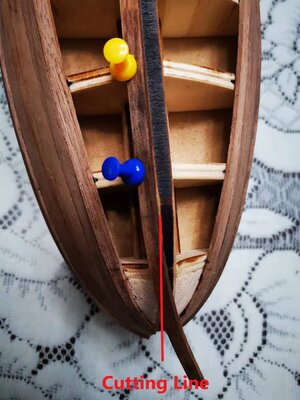
The red line is the cutting line where the garboard strake crosses the false keel. The way of installing the garboard strake is by cutting off the part that overlaps the keel and then simply fix it in its natural spot. So, the garboard strake will always lie halfway between the first bulkhead and the tip of the stem. Remember, I have to have that sharp upwards curve to keep it in line with De Veer's drawings and Ab's plans.
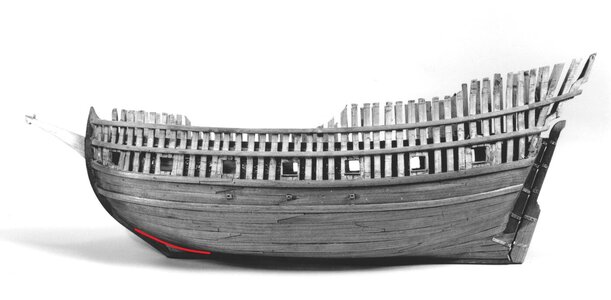
You can see that the gradient of the upwards curve is basically the same as on my model.
The challenge is caused by the sheer of the hull so on my next plank, I can try something like this by tapering it quite aggressively on both ends. A more radical solution will simply be to run a lost strake there - I don't know yet. I never plan these things too much, so we will see what the morning brings!
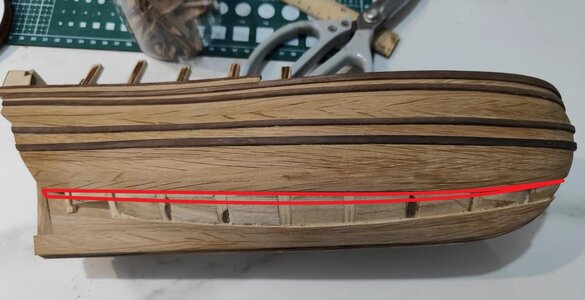
Thank you so much for asking these questions necessitating me to revisit the issue. That is why I say that this log is my think tank in collaboration with my wonderful friends. The fact that they are also incredible modelers is a bonus!

The red line is the cutting line where the garboard strake crosses the false keel. The way of installing the garboard strake is by cutting off the part that overlaps the keel and then simply fix it in its natural spot. So, the garboard strake will always lie halfway between the first bulkhead and the tip of the stem. Remember, I have to have that sharp upwards curve to keep it in line with De Veer's drawings and Ab's plans.

You can see that the gradient of the upwards curve is basically the same as on my model.
The challenge is caused by the sheer of the hull so on my next plank, I can try something like this by tapering it quite aggressively on both ends. A more radical solution will simply be to run a lost strake there - I don't know yet. I never plan these things too much, so we will see what the morning brings!


Thank you so much for asking these questions necessitating me to revisit the issue. That is why I say that this log is my think tank in collaboration with my wonderful friends. The fact that they are also incredible modelers is a bonus!



